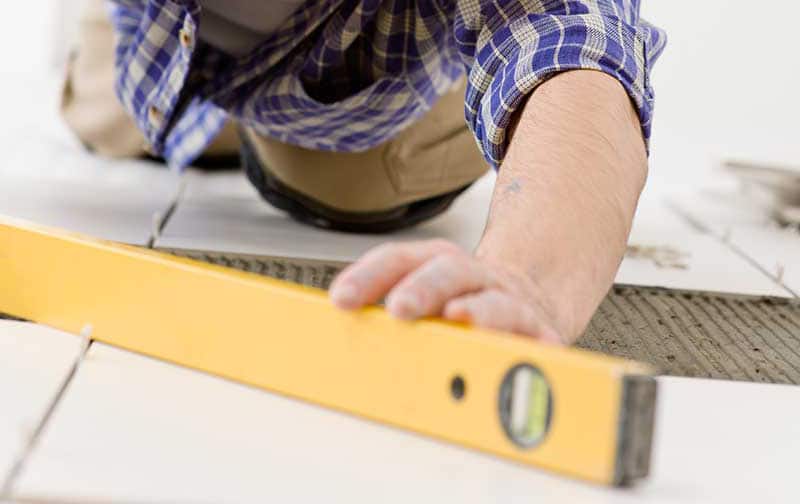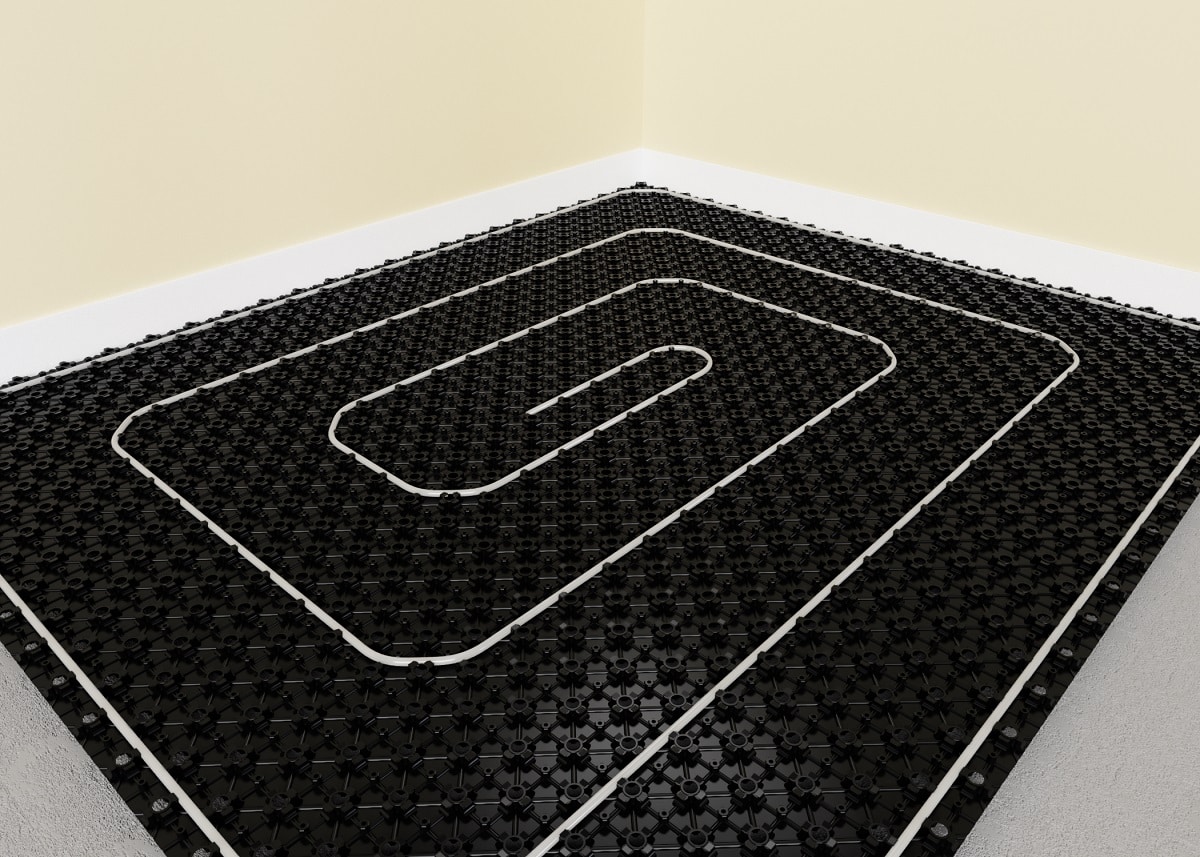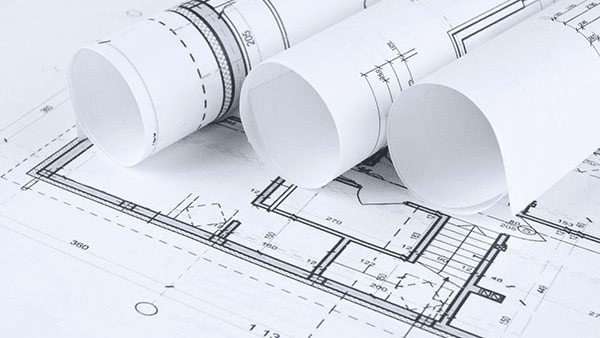If you’re building your dream home or renovating an existing property that requires a new heating system, it’s a good idea to compare all the options available to you so that you can make the best decision for your home in the long-term. After all, a good-quality heating solution may well last you a lifetime, so you’ll want to ensure your chosen system offers comfort, easy-of-use and value for money. In this guide, we’ll explore the main differences between traditional central heating systems and contemporary water floor heating systems. You’ll learn more about:
- How UFH is more energy-efficient than central heating
- Which water systems are recommended for home refurbishment projects
- The differences between installing floor heating and radiators
- The costs of floor heating vs. central heating
- Which heat source and controller is best to use with your new heating system
What are the main advantages of installing a water UFH system over radiators?
Water underfloor heating systems offer a cleaner, smarter way to heat a home. Installed beneath your floor finish, unlike central heating systems floor heating doesn’t require visible pipework or bulky radiators – meaning you can design your home with no comprises on style.
Floor heating is also more energy-efficient than radiator-based heating systems, helping to reduce your energy consumption and saving you money on your bills. This efficiency is produced by the system’s use of radiant heat technology, which focuses on warming the people and objects in a space directly as opposed to radiators which merely heat the air of the space (thereby wasting significant amounts of energy). Water systems also require lower operating temperatures than traditional radiators whilst still producing the same level of warmth in a room, which dramatically improves heat source efficiency for gas-fed boilers. Traditional radiators operate with flow temperature of 55°C and a return of 50°C whereas underfloor heating’s flow temperature can be just 35°C and then 30°C for the return temperature. This results in a +10.2% reduction in energy usage for boilers using underfloor heating compared to radiators.
Radiators also create hot and cold spots in a home – warmer air being located nearer the radiator itself or higher up in a room as the hot air rises – whereas a floor heating system produces consistent, even heat across the floor’s surface. Looking for more information on the differences between floor heating and radiator-based heating systems? Read our in-depth guide to find out everything you need to know.
Is floor heating easier to install than central heating?
Because central heating is a more common heating solution in older homes, you might think it’s also the simplest system to install. But that’s not accurate. If you’re working on a new-build project, then a water underfloor heating system is a terrific idea. You’ll be able to take into account the dimensions of the system within your architectural plans and installation couldn’t be simpler; it can be fitted as part of the fabrication of the building, with each stage of its installation easy to incorporate within your build schedule.
If you’re thinking about retrofitting a new central heating system within an older property, you may have to install the system’s heating pipes beneath the original subfloor – which will significantly increase the cost of installation. Underfloor heating can be fitted on top of the subfloor or a layer of accompanying insulation, making it simpler to install than a radiator-based system in these circumstances. Before installing a new heating solution in your home, it’s important to undertake a heat loss calculation to ensure that your new system will provide enough warmth to heat the space. You can learn more about heat loss in our informative article.

Is a water system suitable to retrofit in a home refurbishment project?
You may think that underfloor heating is only recommended for new-build projects but we offer a range of low-profile water systems that have been specifically designed for retrofitting applications. These systems won’t have a significant impact on floor build-up, meaning they can be installed within existing buildings with fixed ceiling heights. The VLo Nexxa-12 Castellated System is a great choice for home renovations. It uses a 12mm heating pipe which is installed within accompanying castellated panels which allow an optimal and individualised heating layout for your home before a shallow layer of screed is applied.
How much will a new system cost for my home?
Installing a new heating system in your property is a significant investment so that’s why it’s important to choose a solution with low running costs to help offset the initial purchase. To install a new central heating system in an average sized two-bedroom property with a good-sized living room, a smaller kitchen and bathroom, could cost somewhere between £5000 – 8000 depending on your project’s needs, it’s construction method and your location. And through their lower levels of efficiency, central heating systems can be costly to run.
A water underfloor heating system may be more affordable to purchase than you might think. if we take the VLo Nexxa-12 Castellated System as an example, you could purchase this system for the same average sized two-bedroom home for around £6000. The enhanced efficiency of UFH can also mean you’ll end up with lower energy bills for years to come.
How to specify a new underfloor heating solution for your project
Using our online water UFH quotation tool to find the best system for your needs couldn’t be easier. Simply enter a few details of your upcoming project – your location, the room type, the floor size and floor construction – and choose which system you’re most interested in, and we’ll show you exactly how much it will cost to purchase alongside offering direct delivery.
Looking for more information about our range of water UFH systems? Read our buying guide to help you choose the best option for your home.

What’s the best heat source to use with my heating system?
If you’re also considering installing a new heat source for your home, then it’s worth looking at installing a heat pump instead of a traditional gas-fed boiler to both lower your running costs and lower your home’s carbon emissions. Heat pumps are more expensive to buy than boilers but their more sustainable technology will result into dramatically lower running costs.
Water floor heating systems can improve heat source efficiency for ground and air-source heat pumps and hybrid heat pumps. Heat pumps operate best at producing lower temperature water than traditional heat sources and as we’ve explored, Warmup’s water floor heating systems also utilise lower temperatures than radiator systems whilst providing the same level of warmth. Using floor heating with a heat pump can result in +18.5% reduction in energy usage compared to using a heat-pump with radiators and this will result in even greater long-term cost-savings. Find out more about using underfloor heating and heat pumps in our helpful article.
What’s the best way to control my system?
Whether you’re installing a central heating or underfloor heating system in your upcoming project, it’s important to choose quality Smart controls to improve the energy performance of your heating. Our Konekt Wireless Controls can be used with both heating system types. The Konekt control’s Smart technology offers automatic, zoned heating, meaning you can enjoy personalised comfort in different areas of your home at the right time for your needs, without having to set up a complicated schedule. This improved efficiency can assist in reducing energy usage and in turn, can reduce the costs of your energy bills. Using a Konekt-controlled water floor heating system installed with a heat-pump in your home could provide savings of over £700 a year.




![Thumbnail [200x250]](/wp-content/uploads/Electric-Category-Page-Image.jpg)
![Thumbnail [200x250]](/wp-content/uploads/Hydronic-Category-Page-Image-1.jpg)
![Thumbnail [200x250]](/wp-content/uploads/6iE-Projects.jpg)